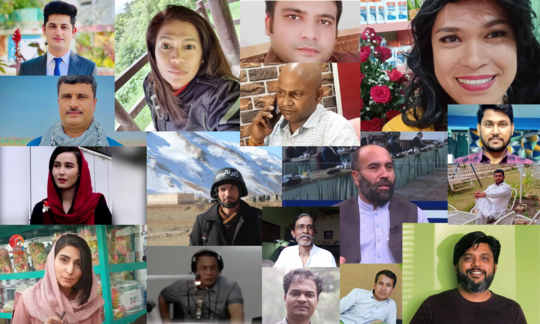Around the world, Covid’s cloak on movement and life may have ushered in the lowest rates of journalist killings globally since IFJ began its annual record of the media death toll in 1993, but that was not to be the case for Afghanistan. After 20 years of conflict, the country continued a bloody trajectory of targeting and terrorising media workers in 2021. In all, nine journalists were lost – a figure that sadly mirrored the country’s annual death toll for media since at least 2014 – with an average nine deaths a year, notwithstanding a spike in 2018 of 15 media killings.
America’s longest conflict wrought its own havoc on the country’s fledgling media and its media workers. Its final year was no different. According to IFJ figures dating back to the start of the conflict, at least 93 journalists have lost their lives for trying to do their jobs or doing so in the wrong place at the wrong time in the country. As hostilities intensified in early 2021 with the Taliban’s advance, the early months of the year established a path of terror that ultimately led all the way to Kabul.
The frequency of targeted killings of journalists, right activists, religious leaders and civil society activists increased as violence escalated in Afghanistan and in spite of ongoing peace talks with the Taliban, which started back in 2020. Bismillah Adil Aimaq, an Afghan journalist and human rights activist was killed in Dara-e-Taimoor village in Ghor province on January 1 after gunmen opened fire on the 28-year-old editor-in-chief of Voice of Ghor radio. The week prior, he’d made public the death threats he’d received via Facebook, prompted by two earlier attacks on him the year prior. Despite formal complaints to police, including through the Afghan Independent Journalist Association (AIJA), the case was not taken up by the Afghanistan police.
By March, the grizzly targeting of three female media workers from Enikass TV in two separate attacks on March 2 sent a worrying sign of what lay ahead. Mursal Wahidi, Sadia Sadat, and Shahnaz Roafi, who all worked in Enikass TV’s dubbing division, were gunned down in different locations in the eastern city of Jalalabad, in Nangarhār province. Later, as towns fell to the Taliban advance, so did media houses. Journalists either fled or faced the consequences. The rest is now another form of history. Amid the chaos of Kabul’s fall, more lives were lost including that of respected Reuter’s photographer Danish Siddiqui, an Indian national, who was killed in crossfire.
While the world’s gaze fixed on Afghanistan’s bloody mess, media workers continued to be targeted in other parts of the region - Bangladesh (1), Myanmar (1), Pakistan (3), Philippines (3) and India (4). All were local reporters. As IFJ figures revealed again, Asia Pacific remains the deadliest place to work as a journalist with 21 deaths recorded.
In India, the body of reporter Raman Rashyap was found in a mortuary on October 3, a day after he covered violent demonstrations between farmers and political supporters in Lakhimpur Kheriwas. In Myanmar, the editor of the Federal News Journal, Sai Win Aung, was the last journalist to be killed in 2021 in an attack by military forces on December 25. He’d been reporting on refugees in Kayin state’s Myawaddy township, near the Thai border when he was fatally shot by Myanmar’s armed forces, the Tatmadaw, in an artillery attack against members of the resistance group the People’s Defence Force (PDF).
This report documents the killings of our media colleagues in another troubling year. The slew of jailings and detentions in embattled Myanmar and closed China is another story. As for Afghanistan, it’s hard to know where to count the cost for that country’s media beyond the lives lost, but it’s at least a start.
Jane Worthington is an award-winning, Australian print and broadcast journalist and the Regional Director of the International Federation of Journalists, Asia Pacific.

